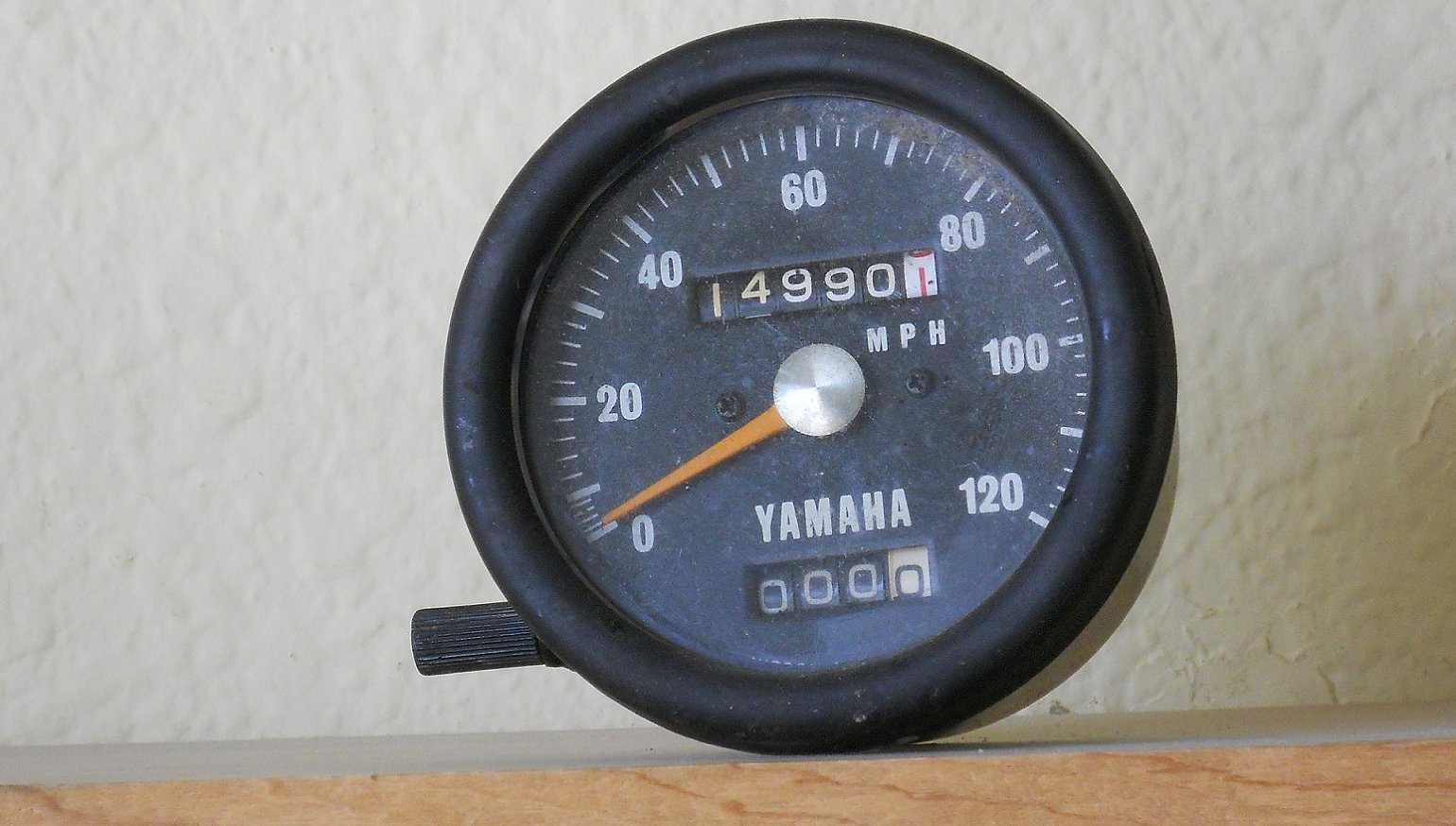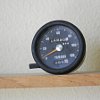Like a lot of people, I’ve been sticking close to home for the last year for reasons it shouldn’t be necessary to elaborate. Some folks filled that time by honing their cooking skills, or learning a language, or watching every video on YouTube. I channeled my cabin fever into home improvement, and recently got around to cleaning out the garage.
A lot of what I found went straight into the Dumpster, but some things brought back such strong memories, or marked such significant events in my motorcycling life, that I couldn’t bear to toss them. Here are some parts that may not be worth much — or anything — but stayed around because of the stories behind them.
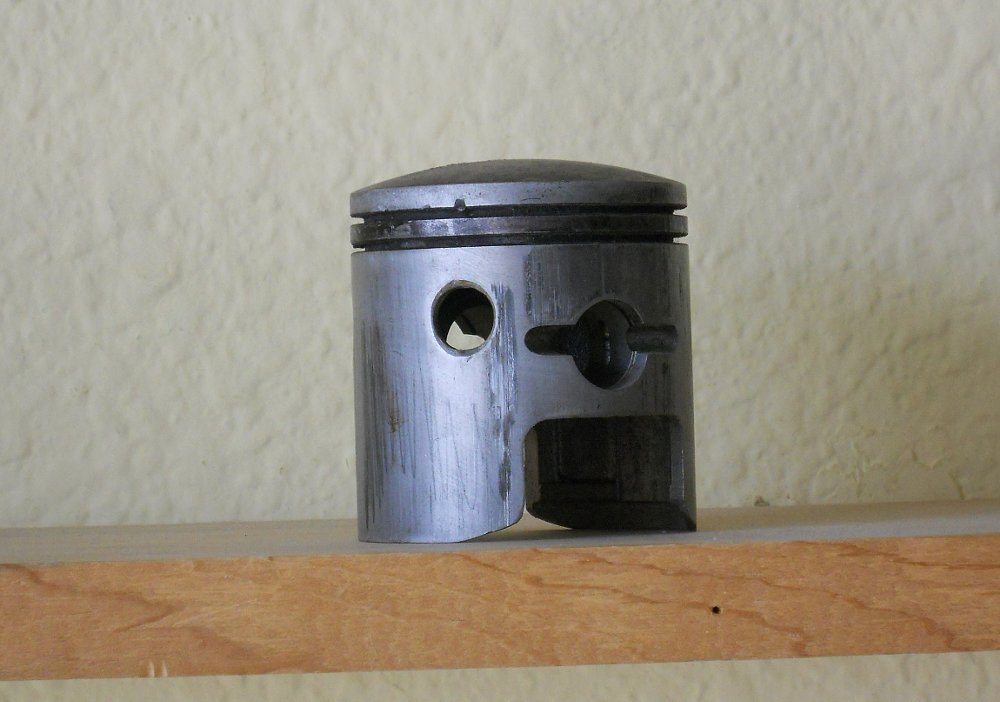
1969 Kawasaki F3 Bushwacker piston
The Bushwacker — a heavy, slow, electric-start, 175 cc single with a rotary-valve two-stroke engine — was my first motorcycle. Now we’d call it a dual-sport, but then it was an enduro. I don’t remember what drew me to it, because I never had any intention of riding off-road. Instead I took it to the most unlikely place imaginable for a street-legal dirt bike — Fremont Drag Strip, where I burned countless clutches flogging the anemic little wheezer down the quarter mile.
A mechanic at the shop where I bought the bike was a weekend tuner and abetted my delusions of drag-strip glory by carving two extra transfer ports into the three-port cylinder and drilling holes in the stock piston to align with the new transfers. Ignorant as I was of carburetor jetting, I went right out the next Sunday and seized the stock piston on the first run.
For reasons lost to time, the roached piston escaped the trash can after the rebuild and wound up in the garage with a lot of motorcycle junk I’ve carried from house to house for half a century. Even today I can’t get rid of it. It was once the beating heart of the bike that started me down this road. So now it sits in a place of honor on my bookshelf.
1970 Yamaha R5 speedometer
When I traded my Bushwacker for a 350 cc Yamaha R5, I had a clearer — and much more appropriate — plan for it than I’d had for the Kawasaki. The American Federation of Motorcyclists held club races at podunk northern California race tracks like Cotati and Vaca Valley, and the R5 was a direct descendant of the Yamaha factory bikes that were tearing up the European Grand Prix circuit. I taped up the lights and removed the stands and mirrors, bought my AFM road-racing license the day of my first race, stuck my temporary racing number — the letter “G” — on the front number plate with strips of electrical tape, and wobbled around the weed-strewn former airfield like a drunk on roller skates. I finished so far back that the next race was already forming on the grid when I crossed the line. It didn’t matter. I was hooked.
The R5 was and still is one of the prettiest road bikes I’ve ever seen, but racing did mine no favors. A crash flattened the right muffler from header to baffle tip, bent the clubman handlebar, dented the tank, and tore the seat cover. My racing budget could support fixing all those things, or entering the next race, and the entry fee won. Eventually I got a Honda CB350 to take over the R5’s commuting duties, and the Yamaha got scruffier by the weekend. Then I traded up to a genuine road racer and the R5 was surplus to requirements.
I had already removed the R5’s speedometer (top photo) under the false impression — common among club racers of the day — that the mechanical speedo drive’s drag resulted in a measurable loss of speed; skipping lunch would have resulted in a bigger speed increase. The odometer showed 14,990 miles, and on the day the bike went to a new owner the speedo missed the appointment so I kept it. In my innocence, I imagined getting another R5 someday and rounding out the mileage to 15,000 even, but to this day that hasn’t happened. Still, you never know when a fixer-upper R5 will pop up on Craigslist, and when it does I’m ready.
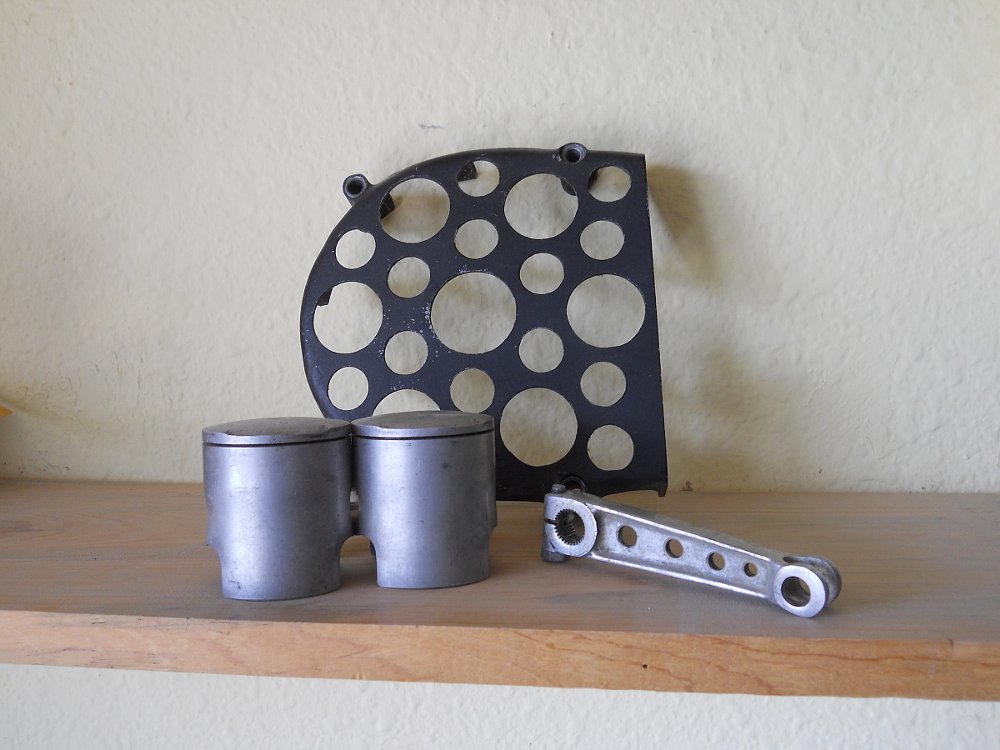
1974 Yamaha TZ250 pistons, clutch cover, and rear brake-cam lever
Race bikes are supposed to be voracious consumers of parts, but my TZ250 never got the memo. Whether a glowing testimonial to the bike’s reliability, or the inevitable by-product of my lack of speed on the track, in three or four years of sporadic racing I replaced the pistons, rings, and low-speed CDI coil twice, and had the crankshaft rebuilt once — and that was all. The major expenses of running the bike were gas, oil, spark plugs and tires. I even ran the same clutch from my first race to my last.
I kept the first set of pistons as a memento — apparently I have a thing for pistons — and hung a spare cover for the dry clutch on the wall, though I have no recollection of buying one, or why I might have needed it since I never crashed the bike. I also ran the stock rear drum brake so the presence of a brake-cam lever in the back of one of my toolbox drawers was likewise a mystery. It’s marvelously light, and slightly bent in the direction of the cable pull, so maybe I got worried about that and replaced it. All I know for sure is all these are genuine, hard-to-find original-equipment pieces for a now-classic road-race bike. I’m waiting for them to blow up on eBay and then I’ll cash in and retire.
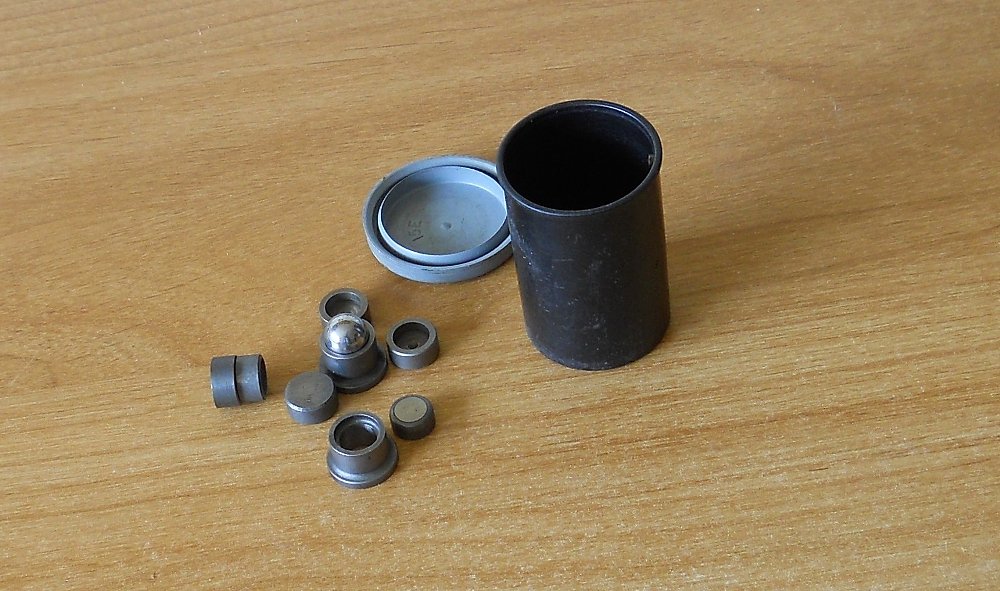
1978 Ducati Darmah SS valve-adjustment shims
When I pried open the unmarked 35 mm film can and a handful of odd shims fell out, I actually felt my blood pressure spike for a second.
It started in 1978 when I walked into the showroom of Triumph/Ducati dealer TT Motors in Berkeley, California, and was struck speechless by the sensuous curves of the Darmah, which sat on the showroom floor amid a cluster of frumpy Triumph twins like a Ferrari at a John Deere dealer. My heart whipped out my checkbook even as my head screamed "No!"
At the time I was a regular on the infamous Marin County Sunday Morning Ride, and I immediately saw myself aboard the Duck, swooping by the pack of lesser mortals on mere Yamahas and Suzukis, sitting down to breakfast at the café in Inverness before anyone else even put their sidestands down. It didn’t go quite like that.
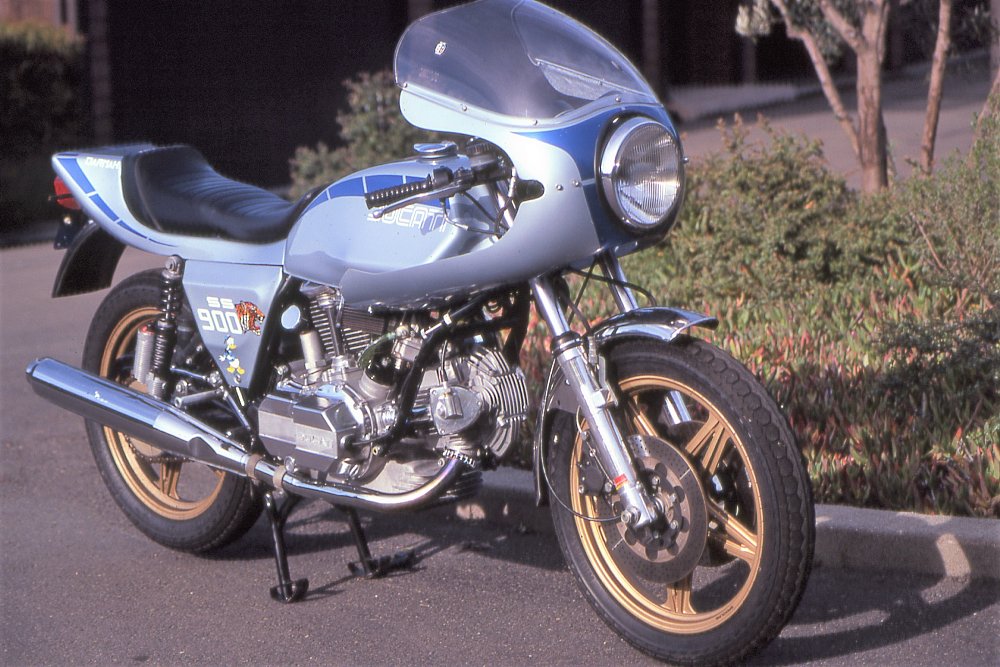
The Darmah was a formidable backroad weapon, but a dismal street bike. The suspension was unforgiving, the low-speed handling truck-like, and with the lack of steering lock every U-turn was an awkward, foot-paddling shuffle. Worst of all was the constant routine maintenance, especially the desmo valvetrain, which was needlessly complex and fiddly, a holdover from an era when valve springs broke even at moderate engine speeds.
By the third or fourth time I found myself lying on my back on a cold cement floor adjusting the front cylinder’s exhaust valve while trying not to drop the tiny wire keepers in my eye, I vowed I’d never again let my heart overrule my head in a buying decision. Now, if I ever feel my resolve weakening, all I’ll have to do is shake that film can and hear those shims rattling around to come to my senses.
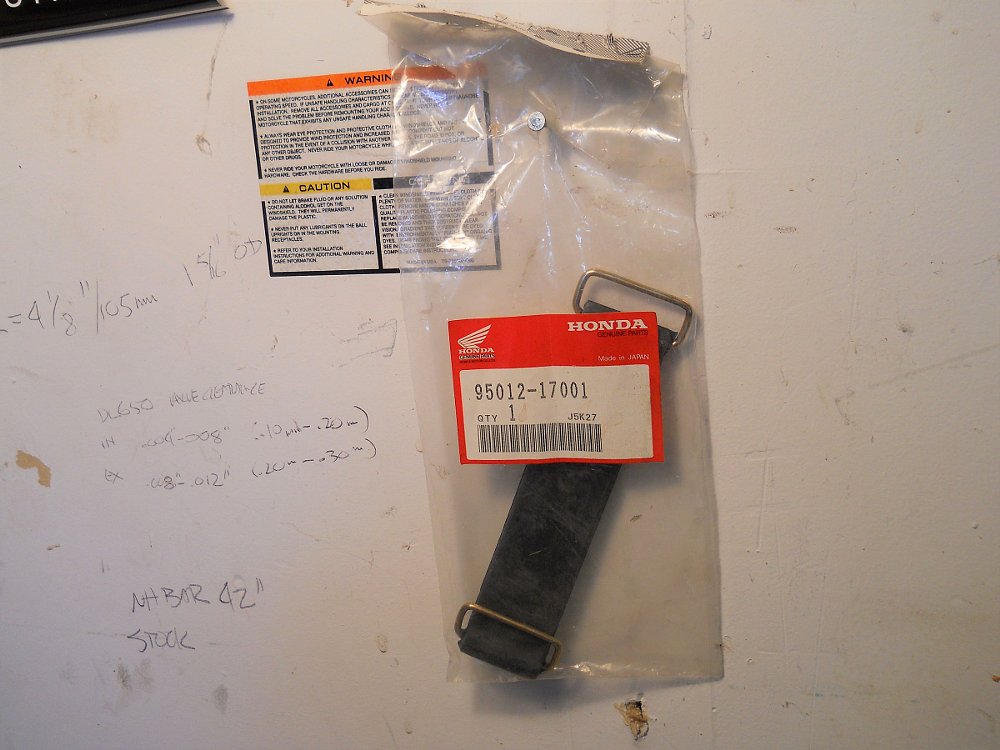
1975 Honda CB400F battery strap
I was features editor for Cycle Guide magazine from 1985 to 1987. One month we ran a story about a Japanese domestic model Honda CB400RR, with a sidebar about our editor Charlie Everitt’s personal 1975 CB400F. A few months later we got a letter, written in a neat cursive hand, from a reader who had six CB400Fs, and wanted to know if anyone at the magazine wanted to buy one or more of them for $500 each. They’d all been stored in a heated garage since new, he said, and none had more than 1,100 miles on the clock.
Up to that time I’d never ridden a CB400F but I’d always heard good things about them. After all, Charlie still had his, and like the rest of us he had the keys to a garage full of cutting-edge test bikes that made the little four seem primitive by comparison. I borrowed the CG van and with $1,000 in my pocket — enough for a bike for me and another for a buddy — I drove north and met with the reader at his house.
The garage door rolled up to reveal, as advertised, six CB400Fs, five red and one blue, parked in a line, each on a battery charger, each clean enough to perform brain surgery on the gas tank. I loaded a red one for me and a blue one for my buddy into the van and headed back to L.A.
Mark Twain had an expression for what motivated me to buy the CB400F. He called it “getting drunk on the smell of someone else’s cork.” As pretty as it was, it wasn’t much fun to ride, especially after I moved to coastal Oregon where some of the backroads doubled as the western-states storage facility for potholes, frost heaves, and a peculiar local aberration called a sunken grade. The dime-store suspension wasn’t the only problem; the bike was so pretty it caused me actual physical pain to get it dirty. Over the long winters, it sat in the basement where, to keep rust at bay, I spritzed the seat with Armor All, massaged the exhaust system with Simichrome, and coated the tank with an exotic wax made from the glandular secretions of a critically endangered South American stink beetle.
Some of the rubber parts started to crack and tear anyway, among them the battery strap. I bought a replacement but before I could install it life intruded in the form of a head-on car crash that put me in the hospital for a week and sent me home so gooned on painkillers and antibiotics that I couldn’t spell my own name for a month, never mind marshal enough functioning brain cells to do paying work.
With money short I sold my nearly new KLR650, which at the time of the crash had only 500 miles on it, and then the CB400F. (Honestly, I was sorrier to see the KLR go than the CB400F; at least a dirty KLR still looks right.) The battery strap found its way into a box when I packed the basement for a move to the house I’m in now.
Just as drilling lightening holes in aluminum parts doesn't make enough difference to justify the effort, tossing the strap would reduce the clutter in my garage too minutely to matter. It hangs on a nail on the wall, a reminder, like these other orphaned parts, of motorcycles past.




